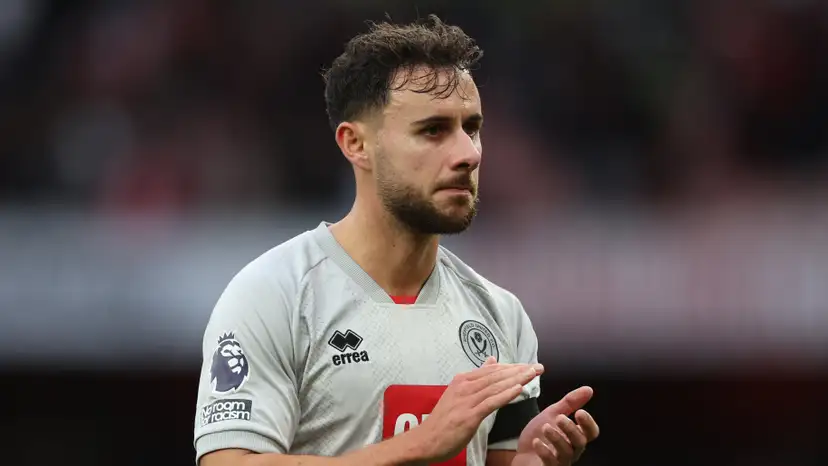Youth Academies : Football’s Goldmine
How Important Are They

The modern transfer market has reached a point where even mid-level players are valued at extraordinary fees. A left back who is simply reliable, not elite, can easily cost €35–50 million, and wages continue to rise alongside these fees. For clubs trying to remain competitive across domestic leagues and European competitions, relying solely on transfer spending is no longer a sustainable or efficient strategy. The volatility of the market means that one misjudged signing can delay progress for multiple seasons.
This is where the youth academy functions as a stabilizing force. It provides a steady internal stream of players who understand the club, the environment, and the expectations placed upon them. Instead of going into the market for every positional need, clubs with strong academies can promote from within. The academy is not simply a place where young players train. It is a system designed to prepare them to eventually assume meaningful first-team roles.
In the face of inflation, heavy competition for talent, and financial regulations such as FFP, the youth academy remains one of the most cost-effective and strategically important parts of an elite football club. It supports financial sustainability, preserves identity, and creates competitive advantages that cannot be replicated through short-term transfer spending alone.
Developing players internally is far cheaper than purchasing established professionals from the transfer market. Training, coaching, housing, and education costs accumulate over years, but they still amount to only a fraction of a single major transfer fee. When an academy graduate earns a place in the first team, the club effectively avoids having to spend €40–80 million on a replacement in the market.
Beyond filling internal needs, academies also create direct revenue streams. Because academy players are signed at very low cost, their eventual sale counts as pure profit for accounting and Financial Fair Play purposes. This makes youth development one of the most effective ways for a club to balance its books while remaining competitive.
Cobham has generated over £300M in outgoing academy sales since 2019. Players like Mason Mount, Tammy Abraham, Fikayo Tomori, Marc Guehi, and Tino Livramento were developed in-house and later sold for large fees. These sales significantly supported Chelsea’s financial flexibility during heavy spending cycles.
Real Madrid’s La Fabrica has quietly operated with the same efficiency for over a decade. Players like Morata, Llorente, Achraf Hakimi, Reguilón, Lunin, Arribas, and others have been sold for substantial profit, while others return later as finished products (Dani Carvajal, for example). Even players who do not become Real Madrid starters often become valuable assets across Europe , which keeps the academy economically productive every season.
Similarly, clubs like Benfica and Sporting CP have built their entire financial models around producing valuable young players. João Félix, Rúben Dias, and Nuno Mendes were not only key contributors on the pitch, they later became the financial fuel that allowed their clubs to reinvest and compete at higher levels.
Finally, academy graduates tend to sign their first contracts at lower wages and earn quicker support from fans because they represent the club’s identity. This combination of financial efficiency and cultural attachment makes them uniquely valuable assets both on and off the pitch.
A strong youth academy is not only a financial asset, it is a cultural anchor. The academy provides a controlled environment where young players learn the specific footballing principles the club wants to project at senior level. They are coached in the same patterns, spacing rules, pressing cues, and technical expectations that define the first team. The result is continuity. When these players step into senior football, they already understand how the team is meant to function.
Clubs with clearer stylistic identities benefit most from this. La Masia remains the clearest example. Young players there are taught positional play from early age groups, so when Gavi or Lamine Yamal entered the first team, they already knew how to occupy zones, circulate possession, and maintain structure. The learning curve is smaller because the philosophy has been internalized over years, not months.
There is also a deeper emotional component. Supporters are far more attached to players who feel like true representatives of the club’s community and values. A long-developed academy graduate is often given more patience and admiration than an expensive signing. Trent Alexander-Arnold, having risen through Liverpool’s academy, became a symbol of the club’s identity and a fan favorite.
The discontent of Liverpool fans therefore did not come as a shock after his decision to leave for Real Madrid. Fans feel a sense of betrayal because someone who embodied Liverpool’s culture and values chose personal ambition over “loyalty”, highlighting how deeply homegrown players are intertwined with supporter expectations and emotional attachment.
In this way, the academy ensures that a club’s footballing identity survives managerial turnover, ownership changes, or short-term rebuilds. It protects the club’s sense of self.
A strong academy also provides competitive advantages on the pitch. Developing players internally ensures that the squad has depth without requiring a long list of expensive transfers. These players are already familiar with the training environment, the expectations on the pitch, and the tactical direction of the coaching staff. They can be rotated into the first team with less disruption compared to an external signing who needs adaptation time.
Managers also tend to trust academy graduates earlier. They know the academy has already trained them in the club’s pressing structure, build-up patterns, or defensive organization. This makes them more predictable in high-level matches, which is valuable when margins are small. If a squad has five or six academy-trained players who can fill multiple roles, the team becomes tactically flexible without extra financial strain.
The strategic value of this has been proven historically. Ajax consistently rebuilds competitive sides because it produces technically assured players who can adapt to various systems. Sporting CP supplies first-team-ready footballers who fit modern tactical trends. Manchester United’s Class of ’92 showed how an academy core can anchor a long period of dominance. These teams did not succeed solely because of individual talent, but because the academy ensured alignment between youth development and first-team strategy.
In short, homegrown players do not simply fill gaps. They expand a manager’s tactical options, stabilize squad depth, and reduce the risk of stylistic mismatch.
Youth academies are vital for elite football, providing financial sustainability, cultural continuity, and reliable first-team talent. They produce players who understand the club’s philosophy, strengthen squad depth, and generate revenue, making them indispensable for long-term success beyond the unpredictability of the transfer market.






